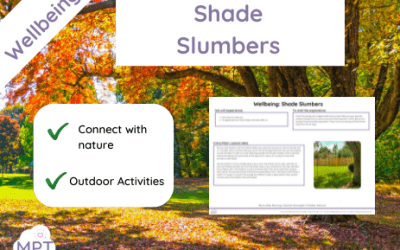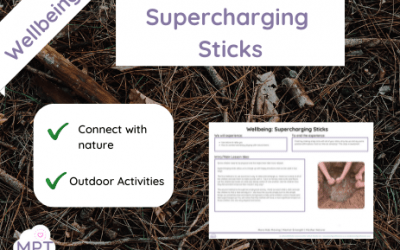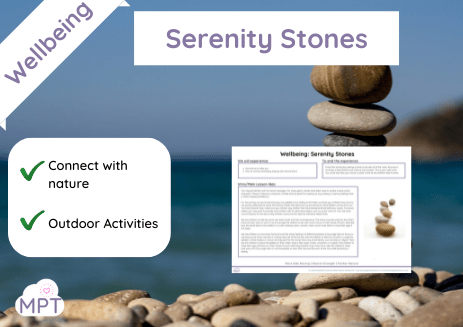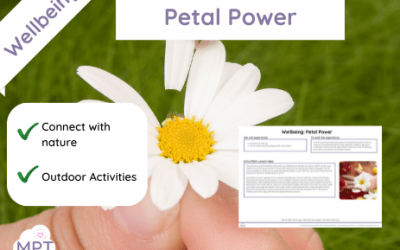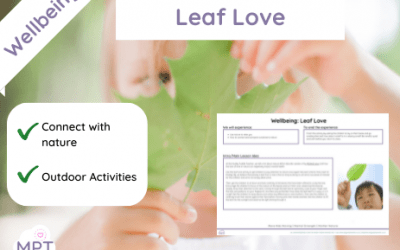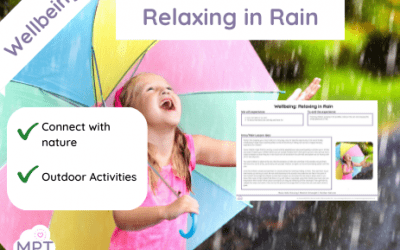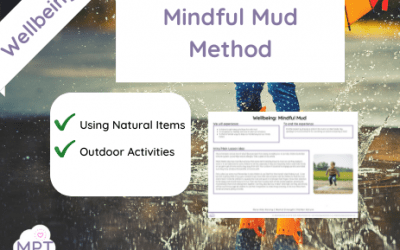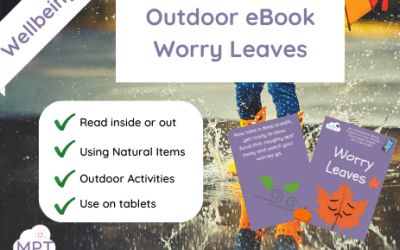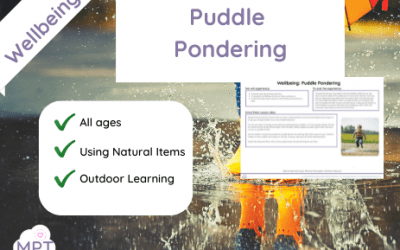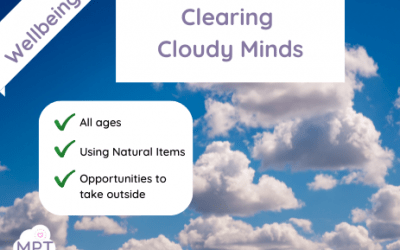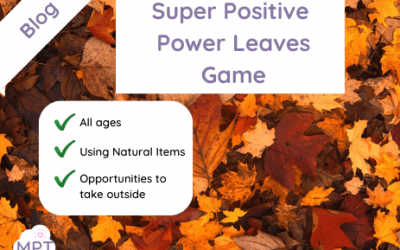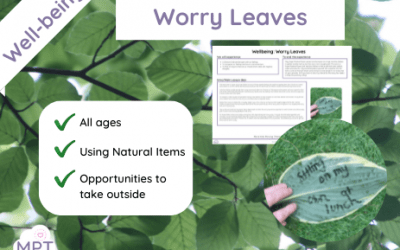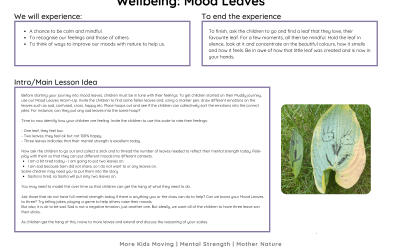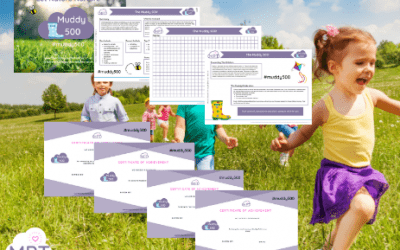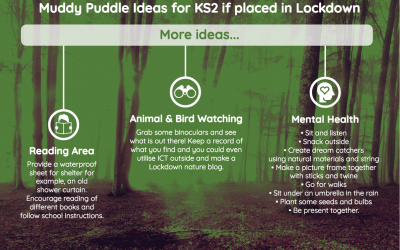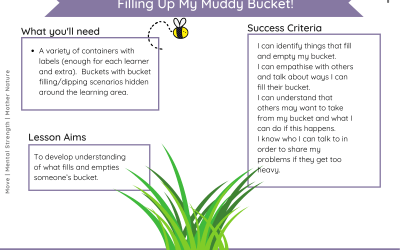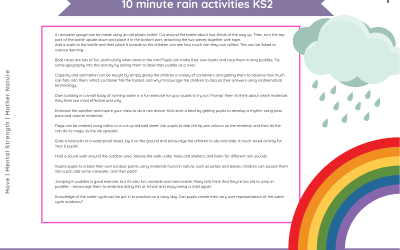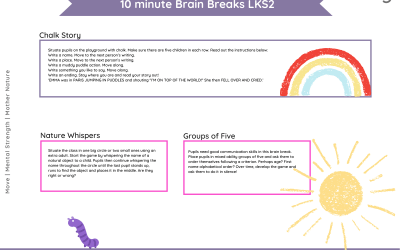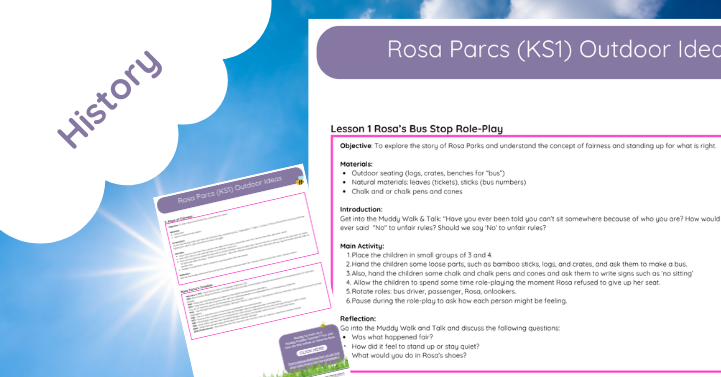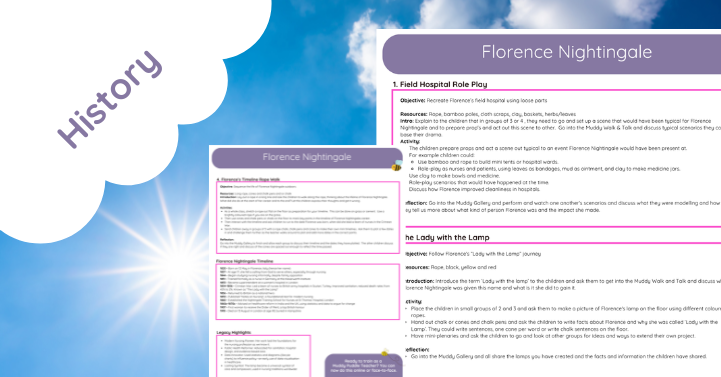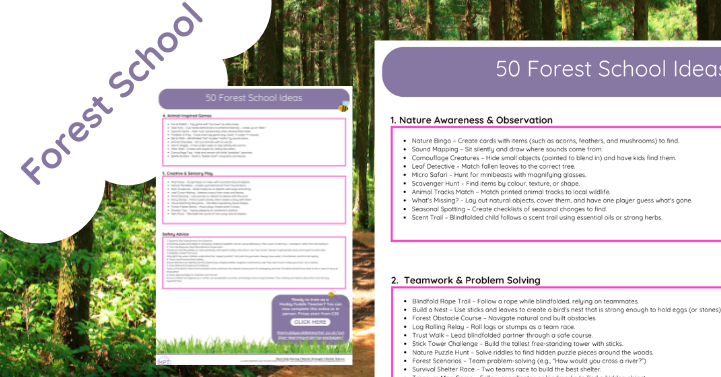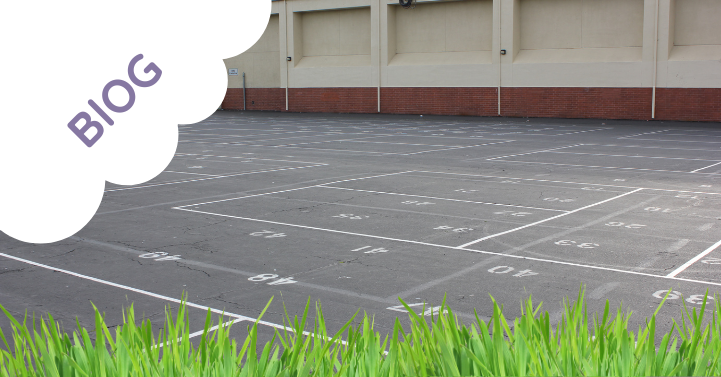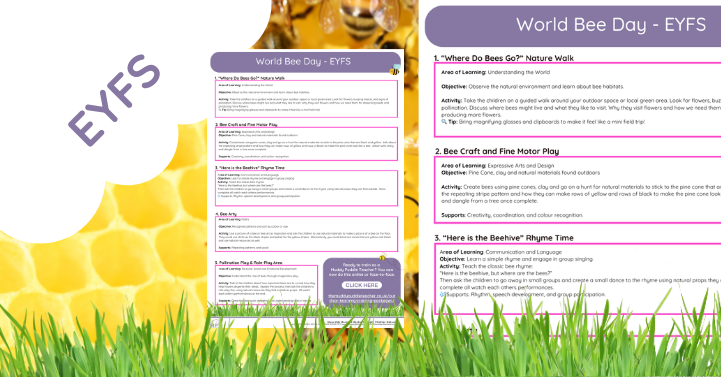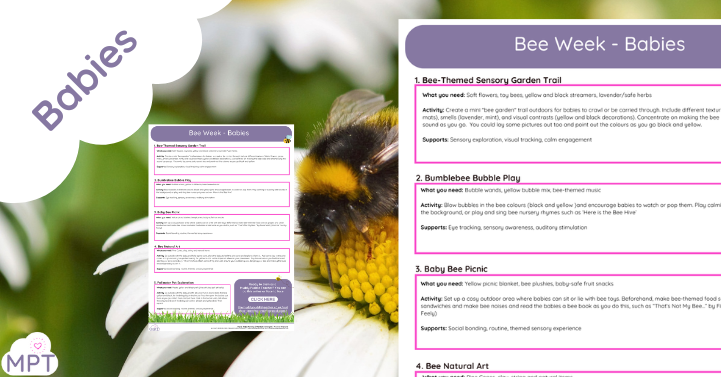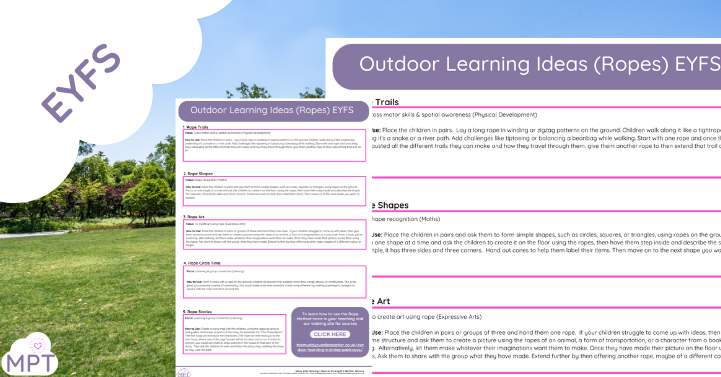Wellbeing: Shade Slumbers ⇒Use the Shade Slumbers Activities to help children use the most simple gifts of nature to...
Supercharging Sticks (Wellbeing)
Sep 8, 2021
Wellbeing: Supercharging Sticks ⇒Use the Supercharging Stick Activities to help active and physical children find a...
Stone Serenity (Wellbeing)
Sep 8, 2021
Wellbeing: Serenity Stones ⇒Use the Serenity Stones to help children use nature to transfer negative energy. A...
Petal Power (Wellbeing)
Sep 8, 2021
Wellbeing: Leaf Love ⇒Use the Petal Power to take you back to your own childhood and use the holistic joys of making...
Leaf Love (Wellbeing)
Sep 8, 2021
Wellbeing: Leaf Love ⇒Use the Leaf Love to help children have a method to help them connect with nature. Connecting to...
Relaxing in the Rain (Wellbeing)
Sep 8, 2021
Wellbeing: Relaxing in the Rain ⇒Use the Relaxing in the Rain lesson plan to make the most of outdoor learning. Do...
Mindful Mud (Wellbeing)
Sep 8, 2021
Wellbeing: Mindful Mud ⇒Use the Mindful Mud method and let mud and mess make you all feed good! ⇒Single Lesson Plan We...
Worry Leaves (Outdoor eBook)
Sep 7, 2021
Worry Leaves ⇒This eBook can be read outdoors in indoors, with tasks to do outdoors after ⇒Single Text We will...
Wellbeing: Puddle Pondering
Sep 2, 2021
Puddle Pondering is a fabulous way to get your sillies out. Being silly is extremely important for children to be...
Wellbeing : Clearing Cloudy Minds
Sep 2, 2021
Clearing cloudy minds and being mindful is imperative in all of our lives. We lead busy, fast-paced lives and...
Super Positive Power Leaves
Sep 1, 2021
Super Positive Power Leaves Play 'Super Positive Power Leaves' and end your lesson on a high. ?Ask the children to...
Well-being: Worry Leaves
Sep 1, 2021
Worry Leaves This lesson plan will cover the following objectives: A chance to talk and be open with our feelings. To...
Well-being: Mood Leaves
Sep 1, 2021
Mood Leaves Use this natural and nurturing lesson plan and let nature help the children to connect with their...
Muddy 500 Challenge (Resource Pack)
Apr 14, 2021
The Muddy Challenge 500 is a new initiative launching in September 2021 - this is the full pack and can be accessed by...
BLOG: Outdoor Learning at Home Ideas
Dec 9, 2020
Outdoor Learning at Home can often be somewhat a drain if the child has been at their desk all day. So why not...
Filling up a Bucket (KS2)
Dec 8, 2020
Use Filling up a Bucket KS2 to take your wellbeing lessons outside sing natural resources to inspire you. This lesson...
10 minute rain activities (KS2)
Dec 7, 2020
Use 10 minute rain activities (KS2) to help get the older kids outside loving life for all it gives us. ...
*FREE*10-minute brain breaks LKS2
Nov 3, 2020
Use 10 minute brain breaks LKS2 to help the older children to get some fresh air, have some fun and revisit and revise their learning.


